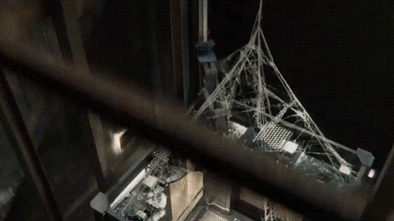Marvel spun some real science into Spider-Man’s webs for the latest film.
Peter Parker’s web-slinging abilities might be the stuff of fiction, but there’s real physics involved in Spider-Man: Homecoming, which opened in theaters Thursday night.
In the new film, there’s a scene that involves Spider-Man (Tom Holland) saving an elevator full of people after the cable snaps. The superhero uses his web to catch the elevator and suspend it long enough to perform some heroics. As it turns out, that’s not just an action-packed scene—but one packed with real-life physics.
The scene also shows that Spider-Man’s web is stronger than steel and capable of sustaining a weight of more than 3,000 pounds.
As exciting as that may be, there’s no such material on Earth that’s as thin as his web with that strength. Then again, science has also yet to prove a bite from radioactive spider could produce super powers.
This article appeared in an InsideHook newsletter. Sign up for free to get more on travel, wellness, style, drinking, and culture.
























